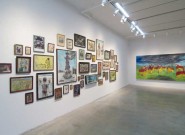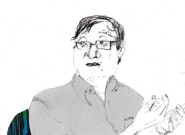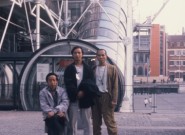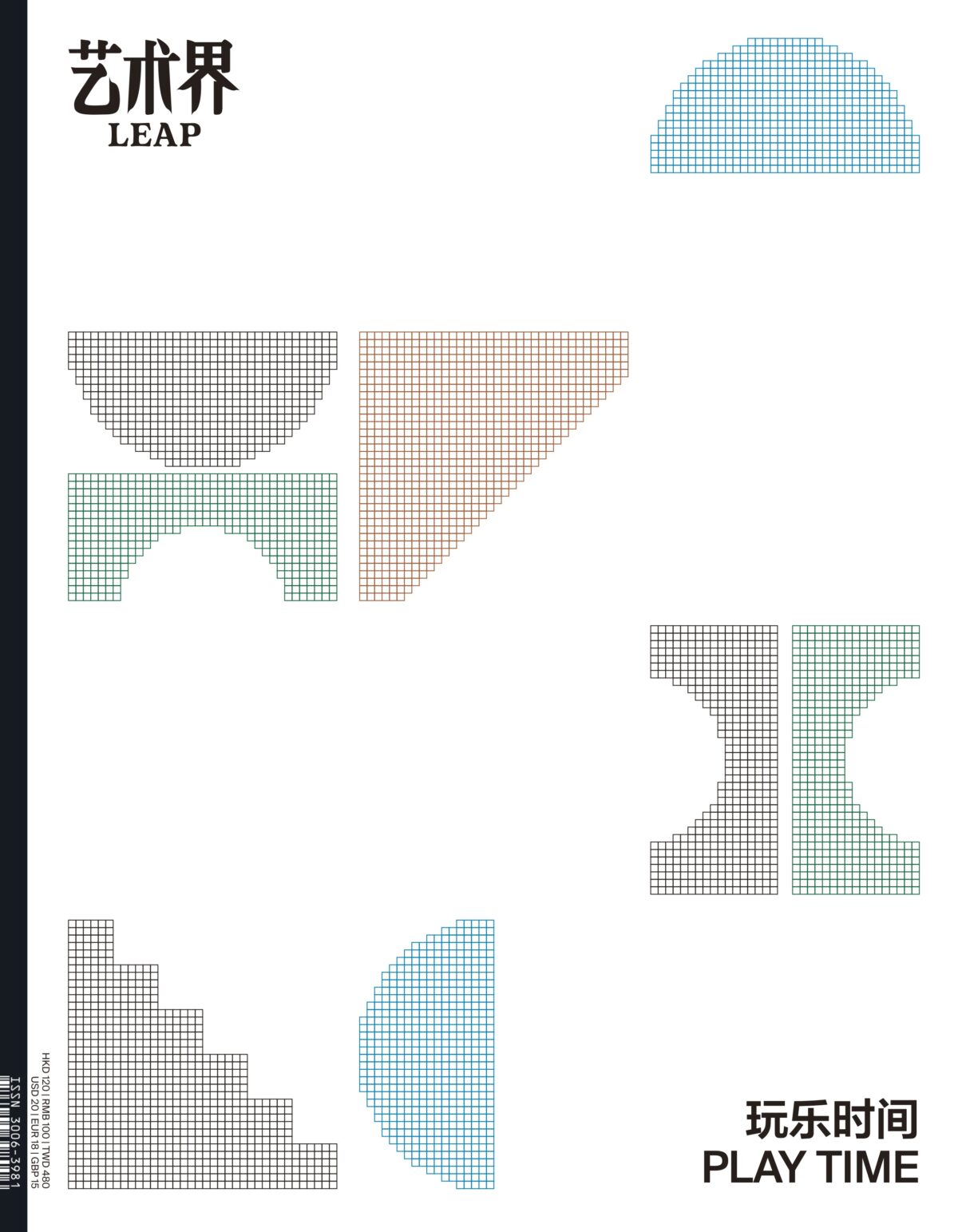American photographer Paul Strand once said, “The material of the artist lies not within himself nor in the fabrications of his imagination, but in the world around him…The artist’s world is limitless. It can be found anywhere far from where he lives or a few feet away. It is always on his doorstep.” Embracing Strand’s…
Read MoreVenturing out under a gray sky to see Wilson Shieh’s new exhibition, “Mortal Coil,” I found similarly dark, muted hues upon arrival. The Twenty-Eight Hong Kong Governors sketches the formal portraits of former Hong Kong governors in shades of brown pencil. Catalogued in tiny print beneath each figure is the governor’s name and his dates…
Read MoreYang Fudong’s recent outing at Marian Goodman’s Paris outpost showcases two works: the multichannel video installation Fifth Night and the photographic series “International Hotel,” both of which were debuted in Shanghart Gallery’s “Useful Life” exhibition last year. But while “Useful Life” (named after an exhibition by Yang, Xu Zhen, and Yang Zhenzhong in 2000) looked…
Read MoreIn 2007, Xia Xing became a household name while working as a reporter for The Beijing News. At the time, perhaps he was unaware that he had already uncovered the theme that would drive his creative work over the next four years. However, he was likely appreciative of the newspaper’s broad influence—with nearly 450,000 copies…
Read More“The Third Party” is divided by curator Beatrice Leanza into three parts, labeled, like a traditional theatrical production, according to the convention of “acts.” These three acts all have their own themes—“How to Be Alone,” “The Stranger,” and the final act, “(Long Live) The Third Party”—each separated by about a week. Owing to the format…
Read MoreThis may come as a shock to those in China, but in the United States some still dismiss Chinese contemporary art as a fad, comparable to the short-lived enthusiasm for Russian contemporary art in the 1980s. For many American collectors, China still can’t be taken seriously based on the handful of artists—Zhang Xiaogang, Yue Minjun,…
Read MoreThe National Art Museum of China’s recent exhibition, “Five Decades of Donations (1961- 2011),” is an impressive display for the audience to behold. Any first rate museum is ultimately defined by its collection, and donated works generally make up the better part of a collection. Contributions are thus a museum’s good fortune and its core…
Read More“Twelve Chinese Artists” is an annual show featuring the 2009 “Museum on Paper” project of Contemporary Art & Investment magazine. In 2009, the monthly magazine began a column featuring in-depth introductions and discussions of the work of individual artists featured on the magazine’s cover; now, these printed projects are finally being showcased in an exhibition…
Read MoreAt first glance, Liu Wei’s recent outing was more conceptual than painterly—an important development as evaluations of Liu’s work often center on the question of the painterly. But the signs of a conceptual turn are hard to ignore, starting with the frames in which the paintings hang, handcrafted by the artist and coarsely mimicking the…
Read MoreSummarizing Xu Tan’s “Keywords” project in a few sentences is an extremely difficult task, and even the artist himself has trouble describing it clearly. In fact, his 2005 solo exhibition “Loose” contained something similar in “100 Daily Words,” which extracted relatively popular words from daily life. Soon afterward, he self-consciously expanded his scope to include…
Read MoreThe question of art education in China, like just about every question in China, is a complicated one, tied to the myriad issues facing a society in the throes of a massive transition. There is no easy solution, and acknowledging the obstacles is a prerequisite to solving the issues. To this end, we interviewed eight…
Read MoreRIDING THE 938 bus out of Beijing’s Guomao station, the Central Business District gradually dissolves on the hour-long journey east to Songzhuang, giving way to a landscape not unlike that found in hundreds of county-level towns across China. An artist community on the city’s periphery, Songzhuang was formed largely under the auspices of Li Xianting,…
Read MoreFor China’s art cram schools, things heat up just before the Lunar New Year and keep going until the fireworks have stopped. Many a hopeful art academy entrant, scared by the duo of provincial exams and school-specific art exams just around the corner, spends China’s highest holidays in the classroom. This is the tensest period…
Read MoreI spent the 1970s in a factory. That decade, when I was between the ages of seventeen and twenty-seven, was an era severely lacking in books, but it was also the era during which I read the most. Every day after work, I buried myself in books, reading myself into states of both ecstasy and…
Read MoreCreation myths are all more or less the same, but this one is better than most. In 1998, Rirkrit Tiravanija and Kamin Lertchaiprasert buy a piece of land in Sanpatong, a village twenty minutes by car outside Chiang Mai. It has no water or electricity. They intend to use it to bypass the concept of…
Read MoreIn 2006, Sun Xun founded π Animation Studio in Hangzhou. The 2005 graduate of the China Academy of Art was anxious to build his own studio so that he could begin work on a high-quality animated film. The 27-minute, 50-scene film— entitled 21 Grams and featured in the “Orizzonti” section of the 2010 Venice International…
Read MoreTwo bulky television sets atop a second-hand writing desk greet visitors to this highly staged exhibition of historic video art, backs turned toward each other. On the first runs a 1985 loop of performance clips from Shanghai’s M Group, in which artists Song Haidong and Qian Weikang do things like burn self-portraits and turn a…
Read More“Against Easy Listening” is New York-based curator Steven Lam’s second of two exhibitions for 1a Space as part of his curatorial residency with the nonprofit organization. The title of the show, which includes artists from Mainland China, Hong Kong, Japan, Korea, and Vietnam, lays out the premise clearly: it’s an opposition to simple or passive…
Read MoreJin Shan’s solo exhibition at Platform China Contemporary Art Institute is a live demonstration of a long-term plan. “One Man’s Island” is comprised of two component parts: fifty video “diaries” shot by Jin Shan in his studio, and a manuscript containing tens of thousands of words written during the same period. The project played out,…
Read MoreFor their Beijing debut, the Indian duo of Thukral & Tagra transformed the UCCA’s middle hall into a spectacle in their signature style of “Punjabi Baroque.” With white retro furniture, warm family photos, glass crystal ornaments, and cheap kitschy artificial flowers meticulously arranged; red safflowers blooming against a blue wall-paper background; Kabbadi (a form of…
Read More























